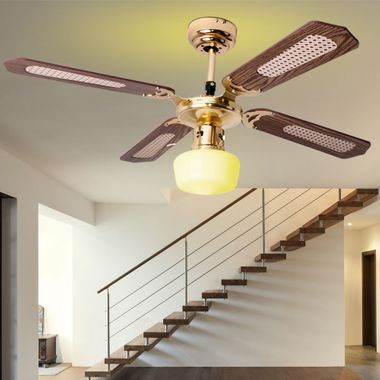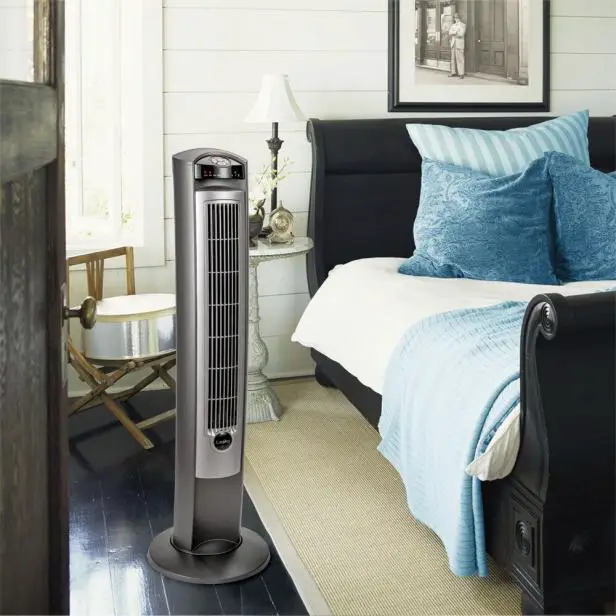
Fans have become an essential part of our lives, especially during the warm summer months. They provide us with much-needed relief from the heat and help create a comfortable environment indoors.
However, many people are often concerned about the energy consumption of fans and its impact on their electricity bills.
Types of Fans
To understand the energy consumption of fans, it is crucial to consider various factors such as the type of fan, its power rating, and the duration of usage.
Different types of fans have different energy requirements, and their usage patterns may vary.
However, on average, most fans consume relatively low amounts of electricity compared to other household appliances.
There are several types of fans available in the market, each with its unique features and energy consumption characteristics.
Some common types of fans include:
- Ceiling Fans
- Table Fans
- Pedestal Fans
- Tower Fans
- Wall-Mounted Fans
- Box Fans
How much electricity does a fan use?
The power rating of a fan is an essential factor in determining its energy consumption. It is typically measured in watts (W) and can vary depending on the size and model of the fan.
On average, electric fans consume between 25 watts to 75 watts at maximum speed.
To calculate the energy consumption of a fan, you can use the formula:
Energy Consumption (kWh) = Power Rating (kW) × Usage Time (hours)
For example, if you have a fan with a power rating of 50 watts (0.05 kW) and you use it for 5 hours a day, the energy consumption would be:
Energy Consumption = 0.05 kW × 5 hours = 0.25 kWh
Factors Affecting Energy Consumption
Several factors can affect the energy consumption of fans. Understanding these factors can help you optimize your fan usage and reduce energy consumption. Some key factors include:
- Fan Speed: Higher fan speeds generally consume more energy. Adjusting the fan speed to a comfortable level can help save electricity.
- Fan Size: Larger fans tend to have higher power ratings and consume more electricity. Consider the size of the fan according to the room to ensure efficient energy usage.
- Usage Duration: The longer you use the fan, the more energy it will consume. Be mindful of the duration and turn off the fan when not needed.
- Energy Efficiency: Some fans come with energy-saving features such as timers and sleep modes. Opting for energy-efficient fans can significantly reduce electricity usage.
Are tower fans more energy-efficient than other types of fans?

Tower fans are known for their sleek design and effective air circulation. In terms of energy efficiency, tower fans can be a great choice as they generally have lower power ratings compared to ceiling fans or pedestal fans.
However, energy consumption can still vary depending on the specific model and usage patterns.
Can using fans instead of air conditioning save energy?
Yes, using fans instead of air conditioning can help save energy. Fans provide localized cooling by circulating air, whereas air conditioning consumes significantly more electricity to cool an entire room.
By using fans strategically along with proper ventilation, you can reduce your reliance on air conditioning and save on energy costs.
Are high-speed fans more energy-intensive?
Yes, high-speed fans generally consume more energy compared to lower-speed settings. If energy conservation is a priority, using the fan at a lower speed can help reduce electricity usage without compromising comfort.
tips for optimizing fan energy consumption?
- Use high-efficiency fans: Invest in energy-efficient fans that are specifically designed to consume less energy while providing effective airflow.
Look for fans with an ENERGY STAR rating or similar energy-efficiency certifications.
- Proper fan selection: Choose fans that are appropriately sized for the specific application. Oversized fans can waste energy, while undersized fans may not provide adequate airflow.
- Regular maintenance: Keep the fans clean and properly maintained. Dust and debris can accumulate on fan blades and hinder their performance, leading to increased energy consumption.
Regularly clean and inspect the fans to ensure they are running efficiently.
- Optimize fan speed: Adjust the fan speed based on the required airflow. Running fans at full speed unnecessarily can consume more energy.
Consider using variable speed drives (VSDs) or fan speed controllers to adjust the fan speed according to the specific needs.
- Control ventilation: Implement smart controls and automation systems to regulate fan operation based on occupancy, temperature, or other relevant factors.
This ensures that fans operate only when necessary, reducing unnecessary energy consumption.
- Proper ductwork design: Ensure that the fan system is properly designed with well-designed ductwork and adequate airflow paths.
Poorly designed ducts can cause air leakage or resistance, forcing fans to work harder and consume more energy.
- Consider fan placement: Evaluate the placement of fans to maximize their efficiency. Strategic placement can help improve airflow and reduce the need for additional fans.
- Insulate ductwork: Insulate the ductwork to minimize heat gain or loss. This helps maintain the desired temperature more effectively, reducing the workload on fans and saving energy.



Comments are closed.